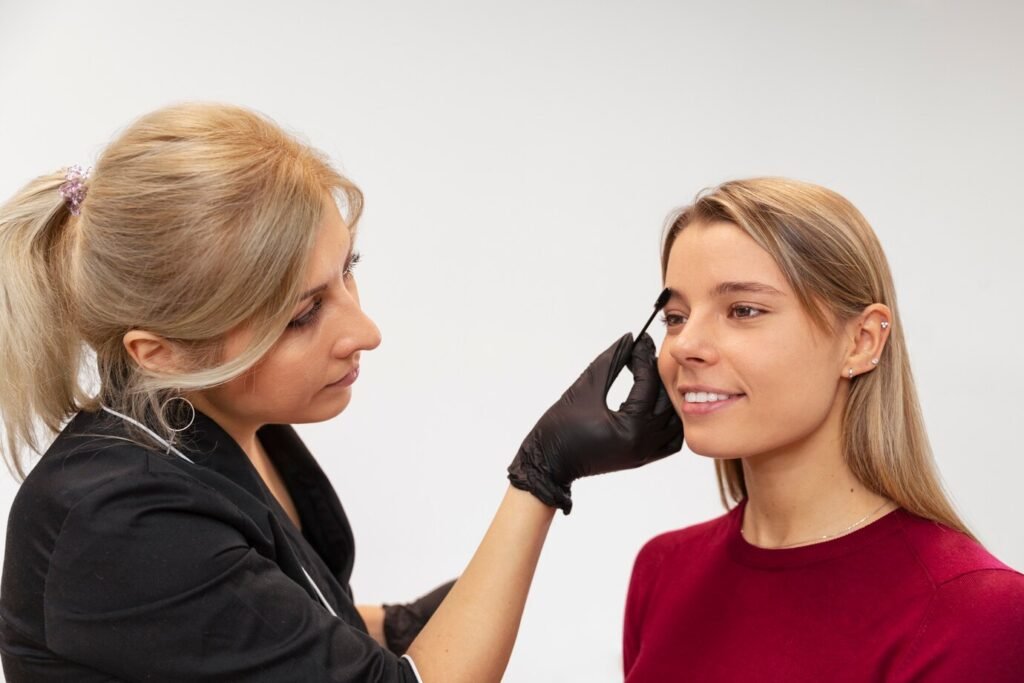A SMAS facelift (Superficial Musculoaponeurotic System facelift) is a highly effective surgical technique that rejuvenates the mid-to-lower face with natural-looking results. While it is considered safe when performed by a board-certified plastic surgeon, like any surgical procedure, it carries some risks and potential complications. Understanding these risks helps patients make informed decisions and approach the procedure with realistic expectations.
In this article, we’ll break down:
- The most common and rare complications
- Their estimated likelihood
- How skilled surgeons reduce the risks
Common SMAS Facelift Risks and Their Chances
1. Swelling and Bruising
Frequency: Very common (up to 100%)
Post-operative swelling and bruising are expected and typically peak within the first 3–5 days. Most patients see significant improvement within 2 weeks.
Surgeon Mitigation: Gentle tissue handling, proper surgical technique, and post-op care like cold compresses and head elevation.
2. Scarring
Frequency: Common, but usually minimal
Incisions are typically hidden along the hairline and natural creases of the ears. In most cases, scars heal well and fade over time.
Surgeon Mitigation: Precise incision placement, layered suturing, and guidance on scar care (e.g., silicone gels or scar creams).
3. Hematoma (Blood Accumulation Under the Skin)
Frequency: 1%–3%
This is the most common serious complication and usually occurs within 24–48 hours post-surgery. It may require drainage but is rarely dangerous if treated promptly.
Surgeon Mitigation: Blood pressure monitoring, avoiding blood thinners pre-op, and instructing patients to avoid straining post-surgery.
4. Infection
Frequency: Less than 1%
Infections are rare due to sterile surgical techniques and pre/post-op antibiotics. When they occur, they’re usually mild and treatable.
Surgeon Mitigation: Sterile environment, prophylactic antibiotics, and clear aftercare instructions.
5. Nerve Injury
Frequency: Temporary weakness: up to 5%; Permanent injury: <1%
The SMAS facelift involves deeper layers, so there is a small risk of nerve irritation or injury, particularly to facial motor nerves. Most cases are temporary and resolve within weeks to months.
Surgeon Mitigation: Detailed anatomical knowledge and a meticulous, conservative approach to tissue dissection.
6. Hair Loss Near Incision Sites
Frequency: 1%–2%
Hair thinning or loss can occur around the temples or above the ears due to tension or damage to hair follicles during incision.
Surgeon Mitigation: Careful incision design along natural hairlines and avoiding excessive skin tension.
7. Skin Irregularities or Necrosis
Frequency: Rare (<1%)
Poor blood supply, especially in smokers, can lead to delayed healing or tissue loss (necrosis). This may require wound care or revision.
Surgeon Mitigation: Strict non-smoking policy, gentle handling of tissues, and ensuring adequate blood flow during surgery.
8. Poor Aesthetic Result or Asymmetry
Frequency: Variable
No facelift can guarantee perfection, but asymmetry, dissatisfaction with results, or under/overcorrection are possible. Sometimes, revision surgery may be needed.
Surgeon Mitigation: Detailed pre-op planning, photographic analysis, and a customized approach based on facial anatomy.
Factors That Increase Risk
Certain lifestyle and medical factors can elevate your risk of complications, such as:
- Smoking
- High blood pressure
- Diabetes
- Autoimmune disorders
- Blood-thinning medications
- Poor skin quality or extreme weight fluctuations
A thorough pre-op evaluation helps identify and minimize these risks.
How Experienced Surgeons Reduce the Risks
Board-certified plastic surgeons trained in SMAS facelift techniques take several steps to improve safety and outcomes:
- Use of precise, tissue-sparing surgical techniques
- Customizing the procedure based on facial structure and skin type
- Monitoring vitals during surgery
- Providing clear aftercare instructions
- Offering close post-op follow-up
Tip: Choose a surgeon with extensive facelift experience and ask about their complication rates and how they manage unexpected outcomes.
Final Thoughts
A SMAS facelift offers long-lasting, natural rejuvenation—but like any surgery, it’s important to understand the potential risks. Fortunately, serious complications are rare, especially when performed by a highly skilled, board-certified plastic surgeon.
Transparency, preparation, and post-operative care all contribute to a smooth, successful facelift journey. If you’re considering a SMAS facelift, don’t hesitate to ask your surgeon questions and voice any concerns—your comfort and safety should always come first.




